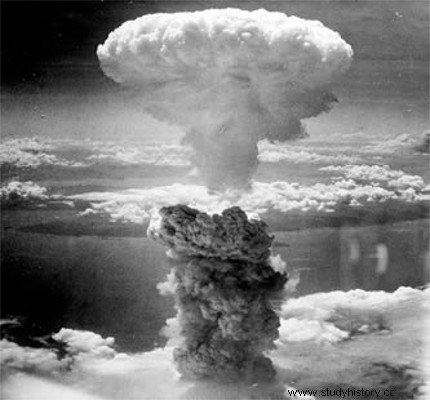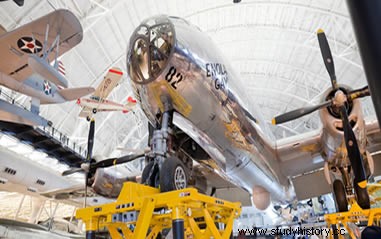
By Tales Pinto
The World War II it was a scene of immense atrocities ordered by military and government leaders on both sides of the conflict. In addition to the tens of millions of deaths resulting from the fighting and bombing, and the more than six million victims of the holocaust perpetrated by the Nazis, there was still the only use in the history of atomic bombs in wars.
The bombing of the Japanese cities of Hiroshima and Nagasaki It can be considered the biggest terrorist attack in the history of mankind, since the objective of the US government and army was to terrorize the Japanese population and thus prevent an invasion of the country to end the war.
Despite the victory over the Germans in May 1945, the war in the Pacific still continued for two months. The Americans had turned the conflict against Japan in their favor since the battles of the Coral Sea and Midway in 1942. In February 1945, the Americans began to advance on Japanese territory, conquering the island of Iwo Jima. The Japanese resistance took place mainly with the use of kamikazes , pilots who used their bomb-filled planes in a suicidal way against US Navy ships.
In parallel with the fighting in World War II, the US was developing the Manhattan Project on its territory , a research initiative to develop a weapon based on the fission of the atom. A large number of engineers and scientists who had fled from European Nazi-fascist governments participated in this project, along with American scientists and engineers. The US military wanted to get ahead of the Germans in creating this bomb, which would use the energy generated from the nuclear fission of uranium and plutonium.
The first successful test of the Manhattan Project took place on July 16, in the Alamogordo Desert, New Mexico, when a plutonium bomb was exploded.
In the same month, Japanese Emperor Hirohito refused the proposed US surrender. The decision taken by the President of the United States, Henry Truman, was to use the atomic bomb to prevent the invasion of Japan, which would cause, according to estimates, the death of a million people. On August 6, 1945, a B-29 bomber, nicknamed the Enola Gay, dropped a uranium bomb (ironically called a “little boy”) over the city of Hiroshima, which exploded 570 meters above the ground. An immense ball of fire was formed in the sky with a temperature of 300 thousand degrees Celsius, generating an immense cloud of smoke in the shape of a mushroom, which reached more than 18 km in height. Estimates indicate that more than 140,000 people have died.

B-29 bomber, the Enola Gay, who dropped the uranium bomb on Hiroshima*
Three days later a new target was reached. Over the city of Nagasaki, another B-29 bomber, the Bockscar, dropped the "Fat Man", a plutonium bomb stronger than the one that had exploded over Hiroshima. The topography of Nagasaki, located between mountains, prevented further irradiation of the effects of the bomb. However, more than 40,000 people died. In addition to the deaths resulting from the direct action of the two bombs, tens of thousands later died from the radiation.
On September 2, 1945, the Japanese Emperor signed the surrender of the country. In the death toll carried out by the US president, the use of atomic bombs may have been profitable. But what remained for the Japanese population, in particular, and the world population, in general, was the terror in the face of this new military instrument.
* Image credit:kropic1 and Shutterstock
Take the opportunity to check out our video lesson on the subject:
